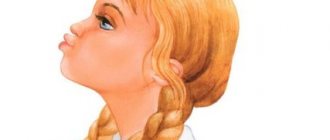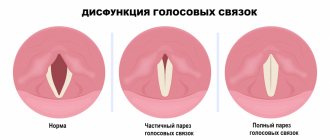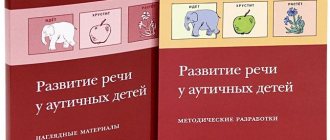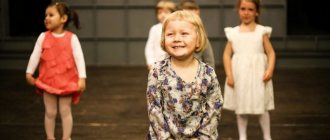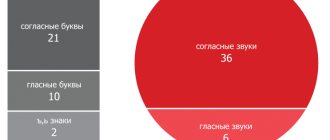Article:
By the age of three, most children are already quite independent, they have an idea of the world around them, are armed with some knowledge about objects and their properties, and a child’s speech at 3 years old contains a sufficient number of related words and sentences.
After all, they have tested a lot of their knowledge in practice, that is, children have tried out from their own experience how to manipulate objects in their environment, and now they can talk about it with understanding. A child's speech development at 3 years of age has a particularly wide range for different children of the same age. Some do not experience any difficulties in their statements, are sensitive to the slightest deviation from the norm in the speech of the adults and peers around them, and show interest in the sound analysis of words. At the same time, other children had just begun to construct sentences more or less correctly, and their speech was very far from perfect.
Features of speech development in children 3–4 years old
At this age, children's speech continues to actively develop. Children of the fourth year of life begin to draw conclusions and can reason about objects and the phenomena surrounding them. The child is interested in the world of people and things, he is interested in communicating with loved ones and with strangers. The time has come for questions, the answers to which the child, due to his age, is sometimes not able to listen to the end.
Active and passive dictionary
The development of speech for children 3–4 years old leads to the fact that the number of words that children use in speech (active vocabulary) doubles: from 1 thousand words available to them by the age of three, to 2 thousand by the end of the third year of life . Moreover, they not only use them, but inquisitively listen to the meaning of words, and even create their own. “Who called a cat a cat and a hippopotamus a hippopotamus?” Children play with the word, tasting it, rhyming and changing it, coming up with incredible combinations of sounds: milk, toloko, far, coloko; slam, slam, slam, slam.
Long new words, incomprehensible in content, can be pronounced distorted (lipestricism - electricity, lisipede - bicycle), syllables and sounds are often rearranged in them (pervyi - first, gamazin - shop). Combinations of two consonant sounds in a row continue to cause difficulty in pronunciation. In order to pronounce them correctly, the child inserts a vowel sound between them (zinayu - I know), or simply does not pronounce one consonant sound.
Children can already name the details of objects, distinguish externally similar objects, for example, a cup-mug, a tiger-lion. By the age of three, most children should already be able to easily distinguish the animals in the picture below (show it to your child and check):
When learning new words, children of this age establish semantic connections between objects, actions and their names. They begin to think meaningfully about the vocabulary of their native language. However, children's speech is not yet developed enough for full communication. If at the everyday level the baby still has enough mastered words, then they are not enough to retell a long fairy tale or describe a memorable event.
Speech grammar for three-year-old children
The speech of a four-year-old baby consists of phrases. On average, there are 3-4 words in a sentence. At the age of four, they become common, and complex constructions begin to appear - compound and complex sentences. For example: “the doll wants to eat, I’ll make soup,” “when spring comes, the birds fly.”
Children can use singular and plural homogeneous members in phrases. For example, “I draw flowers and clouds”, “the mouse jumps and laughs”. Nouns and verbs begin to give way to their positions; more and more adjectives, adverbs, pronouns and numerals (one, two, three, first, second, third) are found in speech.
But the speech of a 3-year-old child is still imperfect; it is difficult for him to form the plural of many nouns, for example, trees, mouths, sleeves. In coordinating adjectives with nouns, he can also make mistakes, for example, “ripe apple”, “bright sun”.
Often in the speech of children there are incorrect case endings, and the change of the verb in persons and numbers suffers. For example, “I see trees”, “I have a lot of candy”, “children are riding bicycles”. Show the picture below to your child and check this point:
Sound pronunciation
The child grows - his articulatory apparatus becomes stronger, the movements of the tongue, lips, and lower jaw become more accurate and coordinated. A stronger tongue allows you to correctly pronounce previously softened consonant sounds: malyako - milk, syadik - sadik. Long words of 3–5 syllables, as well as words with combinations of two consonants such as bread, class, bottle, are easier to learn.
Most often at this age the following sound pronunciation disorders occur:
- Replacing hissing sounds with whistling sounds: sapka - cap, nozik - knife;
- Unclearly pronounced sound ts, ch: tsyplenok - chicken, prints - prince, tai-chai;
- Absence in speech of the sounds l, r or their replacement with the sounds y, v, softened l: liba - fish, yodka - boat, vozhka - spoon.
If you notice these disorders in your child, you should not worry, but you should consult with a speech therapist. He will always tell you whether this is the age norm, which does not yet require the intervention of a specialist, or not. Although, we must pay tribute, already at this age there are children whose sound pronunciation has practically no defects.
Speech development at 3 years allows for rearrangements and omissions of syllables in polysyllabic words such as hello, please, purple. Such pronunciation deficiencies are successfully overcome by the end of this age period.
The intonation expressiveness of speech is growing - children can imitate adults, adding very expressive notes to the reading of poems by heart and to stories from their own experience. Adjusting the rate of speech and its volume is not always available to children of the fourth year of life. They may speak very quietly, especially when talking to people they don't know. When the impressions of some significant event are too great, the child can talk about them “excitedly,” hesitating and hastily pronouncing words.
A very valuable quality appears - attention to one’s own speech and to the speech of others. Children begin to notice pronunciation deficiencies made by their peers, but less often - their own.
Connected speech
A three-year-old child is not yet able to logically and coherently talk about what he saw, what interested him, or completely retell the content of a work of art read to him. Children of this age are still unable to deliver a monologue on any topic without additional questions. Children's statements are not developed, the phrases are simple and not always connected with each other.
Children cannot compose a coherent story from a picture. They can only list the objects depicted on it and the actions performed by the characters in the image. “There’s a bunny here. He eats carrots. His mother is there. She sits and watches."
Children of this age easily remember and enjoy reciting poems and nursery rhymes that are understandable in content. They can repeatedly listen to the same fairy tale, and then retell its content almost word for word, and the content of some words may be completely incomprehensible to them (bast hut, tar barrel).
Speech therapy examination
In a speech therapy examination of a child of the 2nd and 3rd year of life, only the main directions of the examination and those stages of age-related development of child speech are highlighted, without which the idea of a young child will be insufficient.
The proposed method of speech therapy examination is based on the scheme of the systemic development of normal child speech compiled by N.S. Zhukova based on factual materials from the book by A.N. Gvozdev “Issues of studying children's speech” (1961), as well as on the diagnosis of neuropsychic development of children of the 2nd and 3rd year of life, compiled by K.L. Pechora and G.V. Pantyukhina (1979).
Before starting the examination, it is necessary to accurately establish the child’s date of birth, since tasks are initially offered from the age period that corresponds to the actual age of the child. If the child’s age is between two age periods, then the initial tasks are the tasks of the closest younger period. After presenting the child with all the tasks from the initial age period and assessing their performance, depending on the results obtained, they move on to tasks either from an older age period or from a younger age period. The normal development of a child of the 2nd year of life is considered to be the formation of speech within one quarter:
- 1 year 1 month 1 year 3 months,
- 1 year 4 months 1 year 6 months,
- 1 year 7 months 1 year 9 months,
- 1 year 10 months 2 years.
In the 3rd year - within six months:
- 2 years 1 month 2 years 6 months,
- 2 years 7 months 3 years.
A speech therapy examination includes the collection of data on the early pre-speech development, pre-speech and speech development of the child up to the time of the examination (analysis of extracts from the history of development, analysis of the stage epicrisis in the history of development, etc.). Further, the structural features of the skull, face, the presence or absence of craniofacial asymmetries are noted in various emotional states of the child: during laughter, screaming, crying, frowning, squinting, etc. The formation of voluntary movements in the facial muscles is noted: the ability to frown, raise eyebrows, puff out cheeks.
An examination of the articulatory apparatus includes an assessment of the structural features of the articulatory organs, involuntary movements of the articulatory organs during eating (biting, chewing, swallowing), during facial reactions, speech reactions, during wakefulness, play, the formation of the level of voluntary movements (by display and word with 1 year 6 months).
Muscle tone in the organs of articulation is assessed jointly by a speech therapist and a neurologist.
Further, in the speech therapy examination, the features of the child’s respiratory system, features of the general sound of speech and voice are noted.
The next stage of examination of a child of the 2nd and 3rd year of life is an examination of the formation of speech understanding. In the 2nd year of life, the child’s understanding of speech and generalization function improve, the conceptual vocabulary expands, and connections between objects, actions and their verbal designations develop more intensively. From 1 year 6 months, the child begins to understand adult speech that is not supported by the situation.
In the 3rd year, the understanding of the speech of others changes significantly: the child begins to understand temporary relationships. You can talk to him not only about this moment, but also about the past (what happened yesterday, what they collected in the forest in the summer, how they decorated the Christmas tree, etc.) and about the future (where he will go tomorrow, what he will do on a walk, etc. .d.). A child can understand events in an adult’s story that he himself did not perceive. The child begins to understand some grammatical relations: prepositional-case relations, suffixal relations, prefixal relations, as well as some categories of noun, verb, adjective.
The section “Active Speech” notes the age-related development of the lexical and grammatical side of speech, the assimilation of parts of speech, the formation of the syllabic structure of words and the sound side of speech.
The level of formation of auditory attention and phonemic hearing is important for speech development.
To examine auditory attention, special games are played: “Guess what sounds,” “Guess who called you.”
When examining phonemic hearing, the ability to distinguish and recognize words that sound similar is tested.
In the “Fine motor skills of the hands” section, anomalies in the structure of the hands, the position of the fingers of the hand, the movements of pronation - supination of the hand, the formation of differential grips and the opposition of the fingers are noted.
The speech therapy examination ends with an analysis of the data obtained in the form of a speech report.
We distinguish between normal child development and development ahead of one to two epicrisis periods (one to two quarters, half a year), which is a physiological norm, development ahead of three or more epicrisis terms (three quarters or more) and delayed development, which includes includes a delay in the pace of development and a delay in development itself.
A delay in the rate of development suggests that the child lags behind his normally developing peer only in terms of the timing of the formation of mental processes and speech, that the delay is due to a slowdown in the rate of maturation of brain structures and their functions in the absence of qualitative changes in the central nervous system (Zhurba L.T., Mastyukova E. M., 1981).
Developmental delay suggests that the child’s development of mental processes and speech is qualitatively deteriorating, as well as the fact that he lags behind his normally developing peers in terms of the timing of the formation of these processes.
According to the degree of severity, delayed development is divided into mild delay, significant (medium) delay, and severe (severe) delay.
A mild developmental delay is indicated by the fact that the formation of age-related skills is delayed by no more than one to two epicrisis periods (one to two quarters, one half-year). At the same time, there is a tendency towards a gradual reduction in the time deficit as it grows and corrects.
With a delay of moderate severity (a delay of two to four epicrisis periods or two to four quarters, or two half-years), the time deficit in the development of age-related skills does not tend to decrease, and sometimes increases as the emerging functions become more complex. Emerging skills are deficient or have qualitative features.
Severe developmental delay is characterized by a pronounced temporary deficit in the development of age-related skills, exceeding five to six epicrisis periods (four quarters and two half-years), and a steadily increasing lag as the child grows. Age-related functions either do not appear or are rudimentary and grossly altered.
Speech development norms for children from 3 to 4 years old
Despite the fact that children of this age period may be at different levels of speech development, there are approximate guidelines that you can rely on when assessing your child’s speech. By the end of three years, the baby comes with the following achievements:
- His speech is clearer and his pronunciation has improved markedly.
- The baby can name almost all the objects around him: clothes, shoes, furniture, toys, interior items.
- More and more adjectives, adverbs, pronouns, and prepositions appear in speech.
- The child matches words by gender, case and number, but not always correctly.
- Children can remember and retell short poems and fairy tales.
Normally developing children of this age strive to communicate with peers and adults and actively establish contacts through speech.
How to determine delayed speech development in 3-year-old children
The development of a child’s speech at 3 years of age is most often accompanied by disturbances in motor skills and behavior. Specialists working with such children can say with full confidence that children with speech impairments exhibit the following signs of activity:
- Children are awkward, their movements are uncoordinated, they have poor balance;
- There is a noticeable lag in fine motor skills of the fingers, precise movements with small parts of toys and board games are inaccessible, children do not like to get dressed, fasten buttons, and cannot regulate the pressure on the pencil while drawing.
- Children are inattentive and constantly distracted;
- Among such children, manifestations of hyperactivity, or, conversely, inhibition are common.
The presence of these symptoms indicates that there are disorders of the central nervous system due to its organic failure. In some cases, delayed speech development (SDD) may be caused by unfavorable conditions for raising a child and his social environment.
Delayed speech development in 3-year-old children affects all aspects of speech: sound pronunciation, vocabulary, coherent speech, and its grammatical design. Possible problems:
- Children do not pronounce not only phrases, but also individual words; their speech remains at the level of babbling.
- There is no coordination of parts of speech; children's speech is similar to the speech of a foreigner who has just learned Russian. For example, “Tanya give me a kitty,” “Kolya went to bed,” “Mom sat down in a chair.”
- Whole groups of sounds are pronounced incorrectly, the child distorts or replaces some sounds with others, rearranges sounds and syllables not only in polysyllabic, but also in simple words. For example, nose - socks, eye - glasses, chamber - lapata.
- Prepositions are missing or used incorrectly (on, in, above, under, behind, before, between).
- The child's speech is unfluent, its pace is too fast or too slow.
- Phrases consist of 1–2, less often 3 words, they contain only nouns and verbs (“telegraphic” style of speech).
At this age, most children are already aware of the limitations of their speech capabilities. Since SRD prevents them from contacting peers and adults, these children may exhibit negativism, isolation, and increased irritability.
Speech therapy diagnostics of preschool children
Speech therapy diagnostics consists of the following:
- Filling out the medical history card by the teacher and parents;
- Examination of the child’s fine, general and articulatory motor skills;
- Studying the volume of vocabulary (passive - understood, and active - pronounced) of the baby;
- Checking the state of grammatical structure, phonemic processes (perception, analysis and synthesis of sounds) and coherent speech.
Speech therapy diagnostics of a younger preschooler
Akimenko speech examination technique
In modern kindergartens, V. M. Akimenko’s technique is used for speech therapy examination of children with speech disorders. This is an automatic computer program that conducts testing and processes the received data. Diagnostics is carried out in 15 main sections, includes tasks for children, detailed instructions and methodological materials for a speech therapist.
Additional Information! After testing, the program allows you to make a speech therapy conclusion, make an accurate diagnosis of a speech disorder and outline the process of correctional work.
Study of the state of phonemic perception
The state of phonemic awareness is tested by playing "Parrot". The baby is given the task of repeating two sounds: ka - ga; pa - ba; ba - on. Then a complication occurs - you need to repeat not the sounds, but the words: bowl - bear, varnish - cancer.
Checking compliance with the pattern and sound-syllable structure of the word
Compliance with the pattern is the order of reproduction of syllables in a word. A preschooler can “cut off” difficult-to-pronounce sounds in his speech (ka - mouse), or rearrange them (barelina - ballerina). When examining five-year-old preschoolers, you can use words consisting of 3-4 syllables, as well as materials with a combination of consonants.
Child's classes with a speech therapist
Study of pronunciation and speech production
The study of pronunciation and speech production includes:
- study of the articulatory apparatus and articulatory motor skills;
- state of sound pronunciation;
- reproduction of individual sounds and words, as well as coherent speech.
In the methodology for examining the articulatory apparatus, special attention is paid to the organs of articulation: tongue (long, short); teeth; soft palate (gothic, high, normal); lips (normal, cleft lip, thin, thick). Articulatory motor skills play an important role in pronunciation. Basic exercises: tongue with a spatula and a needle, puff out your cheeks, smile and make a straw with your lips.
Frontal speech therapy lesson in the preparatory group
Speech therapy diagnostics carried out for children 3-4 years old include a large number of exercises performed by imitation - the speech therapist shows them and then performs them together with the child. In older preschool age, preschoolers perform tasks from memory and only practice new exercises with an imitation teacher (however, they should not be included in the speech therapy examination).
Additional Information! The state of pronunciation and speech reproduction is checked using pictures using the task method: “Show me where...”. There should be a lot of picture material for every sound and syllable.
Self-diagnosis of speech delay
The main method for diagnosing mental retardation at home is to observe your child’s speech. While observing your baby, you should note how developed his vocabulary is, how many words he uses. For this purpose, play situations are created where children are encouraged to name objects and toys, and small performances are performed with his toys. You need to carefully analyze how the baby constructs phrases and how many words they consist of.
To assess a child’s understanding of adult speech, you can offer him the following tasks:
- Show parts of your body, body parts of toy animals;
- Show in story pictures what their characters are doing. For example, who is running, who is watering the flowers, who is feeding the chickens, who is sleeping;
- Give simple instructions consisting of at least two steps. For example, first take a doll from the closet, and then put it on a chair;
- Ask about the purpose of the items. For example, show what you eat, wipe your hands, brush your teeth;
- Read a short text and ask questions about its content.
It is necessary to note what sounds the baby pronounces incorrectly, what sounds he replaces with those he pronounces. The child’s ability to retell a short fairy tale and his ability to use intonation are assessed. In addition to assessing speech, you need to pay attention to the state of general and fine motor skills. The following indicators are checked:
- Does the child maintain balance when walking and running?
- can he step over objects?
- how he catches the ball
- can he climb?
- does one maintain balance on a reduced area of support while standing on one leg,
- can he fasten buttons?
- Is the baby able to make precise movements with his fingers?
If the development of a child’s speech and motor skills deviates from the norm, you should consult a specialist and undergo the recommended in-depth examination. If there is a need for this, you need to start corrective work with a speech therapist, defectologist, or psychologist.
